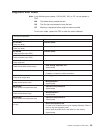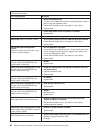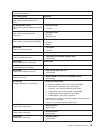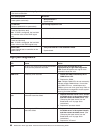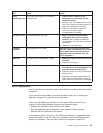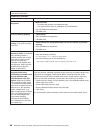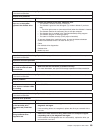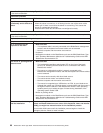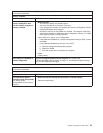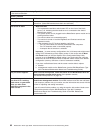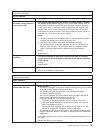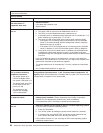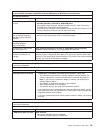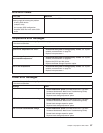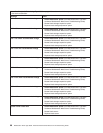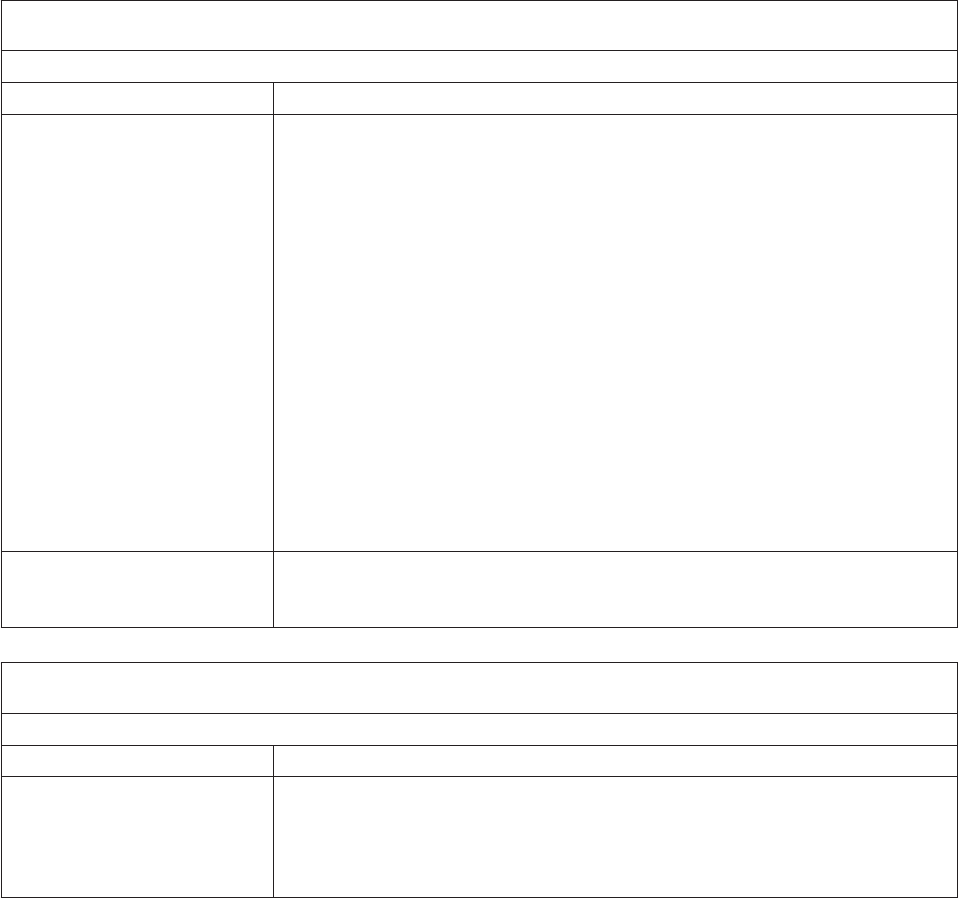
Note:
See
Chapter
7,
“Parts
listing,
Type
8839,”
on
page
105
to
determine
which
components
should
be
replaced
by
a
field
service
technician.
Memory
problems
Symptom
FRU/action
The
amount
of
system
memory
displayed
is
less
than
the
amount
of
physical
memory
installed.
1.
Make
sure
that:
v
The
memory
modules
are
seated
properly.
v
You
have
installed
the
correct
type
of
memory.
v
If
you
changed
the
memory,
you
updated
the
memory
configuration
with
the
Configuration/Setup
Utility
program.
v
All
banks
of
memory
on
the
DIMMs
are
enabled.
The
computer
might
have
automatically
disabled
a
DIMM
bank
when
it
detected
a
problem
or
a
DIMM
bank
could
have
been
manually
disabled.
2.
Check
POST
error
log
for
error
message
289:
v
If
the
DIMM
was
disabled
by
a
system-management
interrupt
(SMI),
replace
the
DIMM.
v
If
the
DIMM
was
disabled
by
the
user
or
by
POST:
a.
Start
the
Configuration/Setup
Utility
program.
b.
Enable
the
DIMM.
c.
Save
the
configuration
and
restart
the
computer.
3.
DIMM.
4.
System
board.
Some
memory
is
disabled
in
memory
diagnostics.
Start
the
Configuration/Setup
Utility
program
(see
“Starting
the
Configuration/Setup
Utility
program”
on
page
11),
and
disable
hot
spare
memory;
then,
run
the
diagnostics
test
again.
Note:
See
Chapter
7,
“Parts
listing,
Type
8839,”
on
page
105
to
determine
which
components
should
be
replaced
by
a
field
service
technician.
Microprocessor
problems
Symptom
FRU/action
The
blade
server
emits
a
continuous
tone
during
POST.
(The
startup
(boot)
microprocessor
is
not
working
properly.)
1.
Make
sure
that
the
startup
microprocessor
is
seated
properly.
2.
Startup
microprocessor.
Chapter
6.
Symptom-to-FRU
index
91



